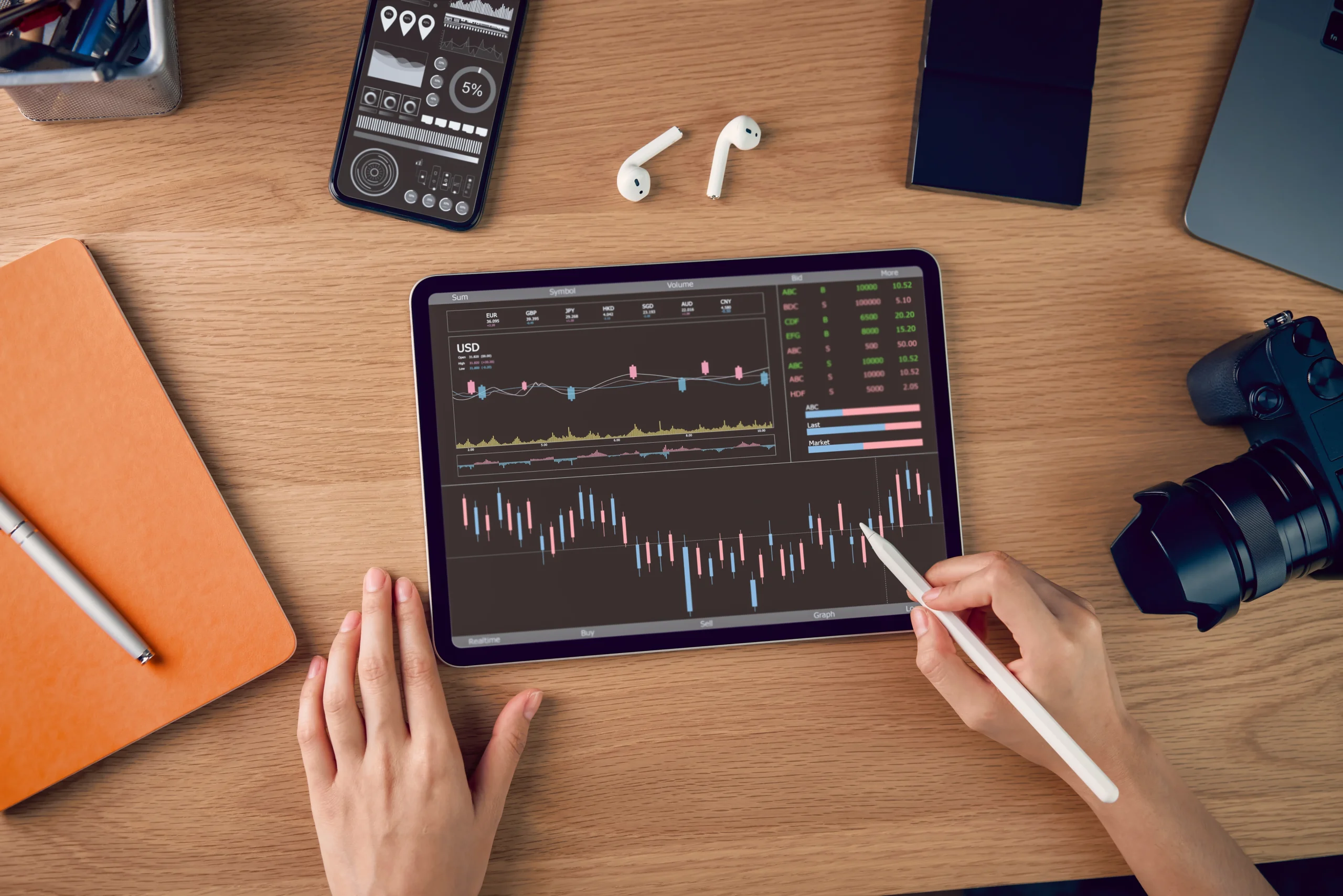Introduction
Forex trading thrives on market movement, and breakouts represent some of the most profitable opportunities for traders. A breakout occurs when the price moves beyond a defined support or resistance level, often signaling a surge in volatility and potential for significant profits. Using Forex Breakout Signals effectively can help traders capitalize on these opportunities, boosting trade volumes and profitability.
In this comprehensive guide, we’ll explore the mechanics of breakout signals, how they are generated, and actionable strategies to use them effectively. Whether you’re a beginner or an experienced trader, mastering breakout signals is essential for maximizing success in the Forex market. For precise trade calculations, explore our Forex Calculators.

What Are Forex Breakout Signals?
Forex breakout signals are trade alerts generated when the price of a currency pair breaches a critical support or resistance level. These signals indicate the beginning of a new trend or the continuation of an existing one.
Key Features of Breakout Signals:
- Entry Points: Indicate when to open a trade after a breakout.
- Stop-Loss Levels: Protect against false breakouts or unexpected reversals.
- Take-Profit Targets: Define price levels to close the trade and secure gains.
- Volume Indicators: High trading volume often confirms the validity of a breakout.
Why Are Forex Breakout Signals Important?
Breakout signals provide traders with critical insights into market behavior, enabling them to make informed decisions.
- Higher Profit Potential
- Breakouts often lead to significant price movements, providing substantial profit opportunities.
- Trend Identification
- Signals help identify the start of new trends or the continuation of existing ones.
- Reduced Risk
- Well-validated signals minimize the chances of trading false breakouts.
- Increased Trade Volumes
- Breakout strategies often involve higher trading volumes due to the surge in market activity.

How Forex Breakout Signals Are Generated
Breakout signals are typically derived from a combination of technical analysis tools and real-time market data.
- Support and Resistance Levels
- Breakouts occur when the price breaches established support or resistance zones.
- Trendlines
- A breakout above or below a trendline often indicates a change in market sentiment.
- Chart Patterns
- Patterns like triangles, head and shoulders, or flags often signal impending breakouts.
- Volume Analysis
- High trading volume accompanying a breakout confirms its validity.
- Technical Indicators
- Tools like Bollinger Bands, MACD, or RSI are used to identify breakout opportunities.
For premium breakout signals tailored to your trading needs, check out our Pricing Plans.
Common Indicators Used in Breakout Trading
Breakout signals rely on technical indicators to confirm their validity. Here are some of the most commonly used ones:
- Bollinger Bands
- Purpose: Measure market volatility and identify breakout points.
- How to Use:
- A price move outside the bands signals a potential breakout.
- Moving Averages (MA)
- Purpose: Identify trends and confirm breakout direction.
- How to Use:
- A price crossing above a moving average may indicate an upward breakout.
- Relative Strength Index (RSI)
- Purpose: Assess momentum during breakouts.
- How to Use:
- RSI above 70 or below 30 suggests strong momentum behind the breakout.
- MACD (Moving Average Convergence Divergence)
- Purpose: Confirm the strength of a breakout.
- How to Use:
- MACD line crossing above the signal line validates an upward breakout.
- ATR (Average True Range)
- Purpose: Measure market volatility.
- How to Use:
- A sudden increase in ATR often accompanies a breakout.

Strategies for Using Forex Breakout Signals Effectively
To maximize the potential of breakout signals, traders should adopt disciplined strategies:
- Confirm the Breakout
- Use multiple indicators to confirm the breakout’s validity before entering a trade.
- Example: Combine Bollinger Bands and volume analysis for stronger confirmation.
- Trade in the Direction of the Breakout
- Align your trade with the breakout direction (long for an upward breakout, short for a downward breakout).
- Set Stop-Loss Levels
- Place stop-loss orders just below the breakout point for upward breakouts or above it for downward breakouts.
- Monitor Volume
- Ensure the breakout is accompanied by a surge in trading volume, indicating market participation.
- Avoid False Breakouts
- Use confirmation tools like RSI or MACD to avoid acting on false breakouts.
- Adjust for Market Conditions
- Adapt your breakout strategy to suit volatile or consolidating markets.
Common Breakout Trading Techniques
Breakout signals can be applied to various trading techniques:
- Breakout Pullback Strategy
- Wait for the price to break out and then pull back to the breakout level before entering a trade.
- Breakout Scalping
- Use short-term signals to make quick trades, capitalizing on small price movements during a breakout.
- Breakout Swing Trading
- Hold trades for longer periods, targeting larger price movements following a breakout.
- Multi-Timeframe Analysis
- Analyze breakout signals across different timeframes to confirm their strength and validity.
Advantages of Using Forex Breakout Signals
- Timely Alerts
- Receive real-time notifications of breakout opportunities.
- Improved Accuracy
- Advanced algorithms and technical analysis ensure reliable signals.
- Reduced Risk of Whipsaws
- Well-validated signals help avoid losses from false breakouts.
- Scalability
- Breakout signals can be used for various trading styles, from scalping to swing trading.
- Higher Trade Volumes
- Breakouts attract significant market participation, increasing liquidity and profit potential.

Common Mistakes to Avoid in Breakout Trading
Even with reliable signals, traders must avoid these pitfalls:
- Entering Too Early
- Wait for confirmation to avoid acting on potential false breakouts.
- Ignoring Market Context
- Consider broader market trends and economic events that may influence the breakout.
- Overtrading
- Stick to high-probability setups and avoid chasing every breakout.
- Neglecting Risk Management
- Always set stop-loss orders to protect your capital.
- Using Too Many Indicators
- Focus on 2-3 key indicators to avoid conflicting signals.
Choosing the Right Provider for Forex Breakout Signals
Selecting a reliable signal provider is essential for successful breakout trading.
Qualities to Look For:
- Proven Track Record
- Choose providers with a history of accurate and profitable signals.
- Real-Time Delivery
- Ensure signals are delivered promptly to act quickly on breakouts.
- Comprehensive Analysis
- Providers should include explanations and additional data with their signals.
- Customizable Alerts
- Tailor signals to your preferred currency pairs and trading style.
Explore our Pricing Plans for premium breakout signals designed to maximize your profits.

Building a Long-Term Breakout Trading Strategy
To achieve consistent success with breakout signals, traders should:
- Stay Disciplined
- Follow a well-defined trading plan and avoid emotional decisions.
- Reinvest Profits
- Use earnings to gradually increase your trading capital.
- Diversify Trades
- Avoid overexposure by trading multiple currency pairs or asset classes.
- Regularly Evaluate Performance
- Analyze past trades to refine your strategy and improve outcomes.

Conclusion
Forex Breakout Signals are a powerful tool for boosting trade volumes and capturing significant price movements in the Forex market. By providing timely and reliable alerts, these signals simplify decision-making and enhance profitability.
To maximize their potential, combine breakout signals with disciplined risk management and advanced analysis tools. Start by exploring our Forex Calculators for precise trade planning or Sign up for an XM Global account for access to premium breakout signals. With the right approach, breakout trading can become a cornerstone of your Forex trading success.












